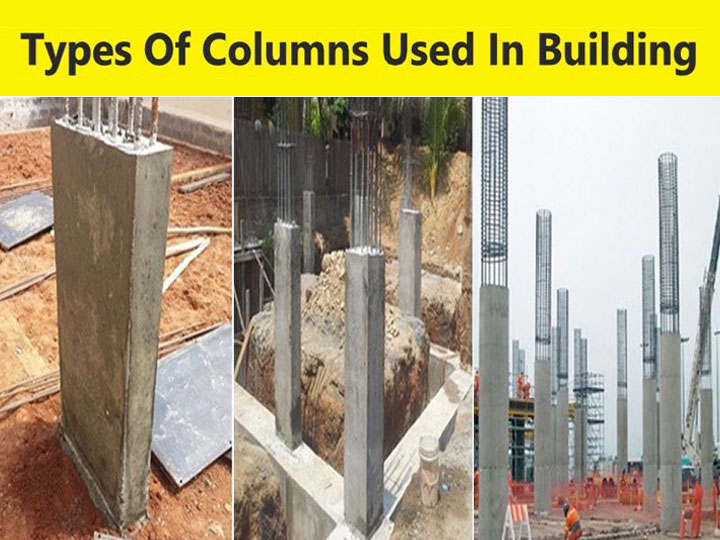Arguably, the most important part of any modern architecture are the columns, because they bear all the load of the superstructure. Columns can be of many types, but we prefer to categorize them depending upon their physical shape. So, today we will talk about the 10 types of columns depending on shape.
We can classify columns based on the following characteristics:
But in this article, we will only discuss the types of columns depending on shape.
Depending upon physical shape – the shape you see them in, or the shape they are cast in – columns can be of nine main types. These are the following:
Now, let us go and learn about each type of column based on shape in brief.
The most common type of column found nowadays, these are the simplest to cast and fit in the most scenarios. Where the shape of a room is rectangular, it is a safe bet that you’ll find at least a rectangular column in there.
Rectangular columns are so popular because they are so very easy to cast. With simple way of shuttering or formwork, these columns can be cast fast and easy without much complicated calculations. This simple yet effective shuttering prevents the concrete from flowing without much ado.
For all these reasons, the rectangular columns are the cheapest and thus they are used most commonly in residential and commercial construction.
These types are columns are basically rectangular columns with equal length and width. Square columns are most useful when the load on the column is distributed evenly on all sides. So, they are not as common as the rectangular columns.
However, since the casting process and the cost thereof the square columns are similar to the rectangular columns, you are bound to find many in civil construction.
These specially designed columns are used in elevations and piling of buildings, since they reduce the appearance of edges. So, you wouldn’t see the bigger of the circular columns out in daylight – they’re often underground, or are covered by other members.
However, a well-finished circular column is, arguably, the prettiest load-bearing member ever. Therefore, you will find some of the rather slender ones, lovingly finished, on the most visible portions of buildings – porches, sit-outs, auditoriums, etc.
Circular columns are also good to place where there will be a lot of traffic – of people, vehicles, or even water. So, you may also find them under bridges and flyovers as well. However, due to the difficulty of casting these, circular columns are not seen often.
Very rarely found, these columns are suitable in the very isolated cases of being in the corners of tall boundary walls needing extra support. L-type columns have similar properties as rectangular columns, and are just as easy and cheap to cast. However, due to the rare need, it’s hard to find them in use.
Most commonly found holding up bridges, flyovers, and similar heavy elevated paths, they are favored in heavy construction and are made to be very strong, since they have to bear all the load of the section alone. They are also easily cast, like rectangular columns, and are cheap, considering the situational requirements.
Another rare type, the column is cast in a V shape only if the room is trapezoidal or triangular in shape, which is quite uncommon, indeed. It is not cheap to cast due to the odd shape of formwork needed, and the excess amount of concrete needed – it requires the most amount of concrete per cross sectional area among all types of columns.
A deviation of the T-type, the Y-type columns are often found holding up bridges or elevated roads. It is more common when there is not much ground space for the column footprint, but the section above is quite wide (or, there are two lanes to be supported with a gap in-between). These are never found in small sizes – only heavy constructors prefer them.
It is a Y-type column, but the twin arms of the column are curved outwards gradually. These are useful for areas with even more severe space constraints, or just for the sheer aesthetic pleasure of it. Again, they are found in heavy construction only.
More commonly seen in older constructions, hexagonal columns are often reformed columns, found in buildings from previous eras, or olden-style architecture. They are quite aesthetically pleasing and are as such placed in exposed positions, such as verandahs, movie theaters, front facades of large buildings, etc. Persian architecture has many great examples of hexagonal and circular columns.
This very rare type of column is used in rooms where there is no scope of constructing rectangular or circular columns. Arched columns are used in rooms where the shape is arched. More often than not a different support solution is found rather than using these columns, since their casting process is ridiculously tricky and costly.
